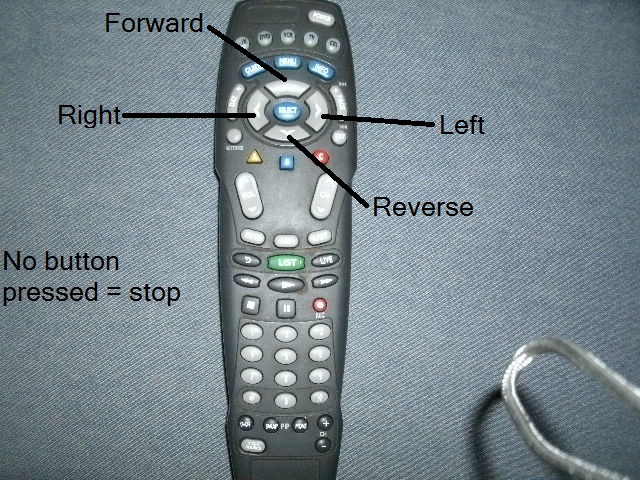Stingray with IR
I have looked but didn't see any postings on how to use the stingray with the parallax ir detector. The easiest way is thru one of the servo headers set at 5 volts. See the attached schematic. You will need to place a 3.3k resistor (thanks to modemman) between the detector's Vcc pin and the detector's Vout pin to make the translator happy.
Edit: This post has been edited from where I showed how to hook it up by by-passing the voltage translators (the harder way)
Edit2: Changed extra pull-up resistor to a 3.3k from a 4.7k
Edit: This post has been edited from where I showed how to hook it up by by-passing the voltage translators (the harder way)
Edit2: Changed extra pull-up resistor to a 3.3k from a 4.7k





Comments
▔▔▔▔▔▔▔▔▔▔▔▔▔▔▔▔▔▔▔▔▔▔▔▔
ScribblerKart
Uh oh, ScribblerKart time!
After looking at the control board instructions and the internal diagram for the detector I see the voltage translators need to see 4k or less resistance. The panasonic ir detector only has a 20k internal pull up resistor. So the translators don't have to be by-passed if you put a 3.3k resistor between the detector's Vcc pin and the detector's Vout pin
Anyway, what I wanted to say is that for me it did not work with 4.7k. It would flip to 0 when I would press a button on the remote, but would be stuck there until I would touch the ground with my fingers (I know... not too scientifical), or reset the board. I tried different values until I got it to work with 3.3k.
I basically used this code to very roughly decide if the signal is stable:
dira[irpin]~ 'irpin is the pin linked to the data pin of the IR chip (defined in CON) repeat if ina[irpin] term.out(".") 'displays dots in a terminal for 1 else 'otherwise fills with string of zeroes term.out("0")This is based on Bob Belleville's "IR Kit" from Obex. Basically it displays dots in fast succession. Then, when you hit a button on the remote, it registers the succession of 0s as a series of dots, so you kind of "see", very roughly, the 38kHz patterns of every button press. After experimenting, I was able to "see" if I'm capturing data reliably, or I'm skipping 0s, etc...
Now, why didn't it work with a 4.7k resistor, and what is the precise science of figuring out what pullups/pulldowns to use while interfacing different sensors to the MSR1?
So I used a 4.7k which (5v/4.7k = ~1 m.a.). That still doesn't meet the 2 m.a. requirement but it worked for me. I'm glad you have it working at 3.3k!
Chris Savage just posted in this thread - http://forums.parallax.com/showthread.php?t=118789&page=2 that Parallax is working on more solutions for the translators.